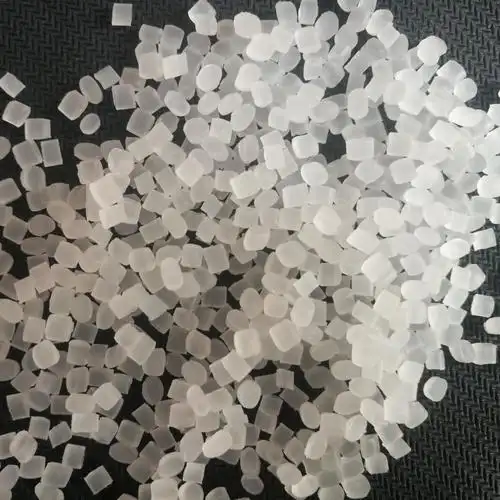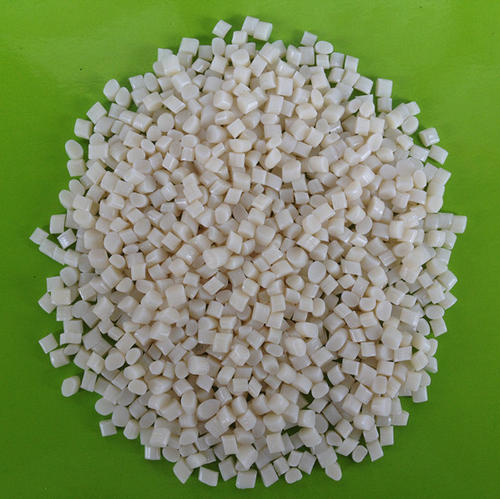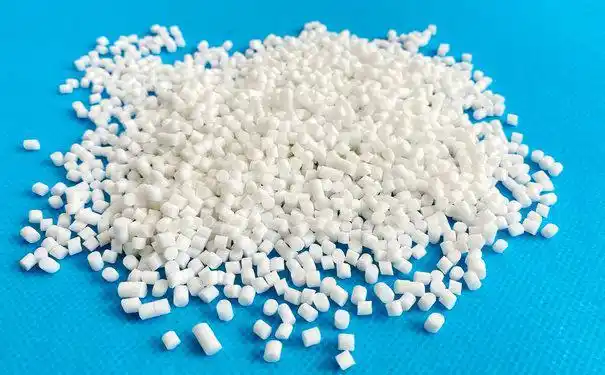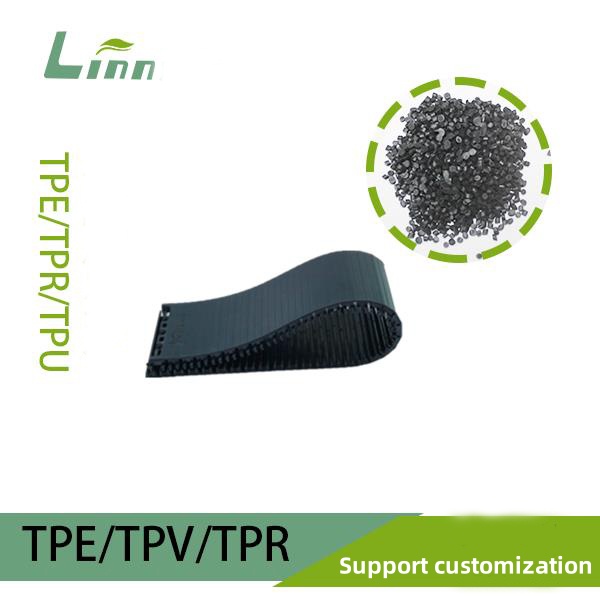Ever yanked a TPE part from the mold, only to spot those eerie spiral swirls twisting across the surface like fingerprints from a ghost? I’ve been there, staring at rejected bins full of them during a midnight shift, heart sinking as the client deadline loomed. After decades elbow-deep in plastics, troubleshooting from startup garages to mega-factories, I know this defect hits hard—especially for TPE, that stretchy chameleon material in grips, seals, and overmolds. Folks search this because spiral lines scream quality fails, spiking scrap, delaying runs, and burning cash. The pain? Aesthetic ruin on visible parts, potential weak spots hiding structural flaws. Solutions? Rooting out the gremlins in melt flow, machine quirks, and mold quirks—fixes I’ve hammered out through sweat and simulations.

These spiral flow marks aren’t random art; they’re scars from uneven melt fronts colliding or shearing wildly. TPE’s low viscosity and shear sensitivity make it a drama queen—flows like syrup one moment, fracturing the next. Picture the molten goo spiraling in because the screw’s bite doesn’t match the mold’s hunger, or cooling gradients twist the flow like a river in rapids. In my early days, a medical tubing client lost weeks to these on translucent parts; opacity hid nothing, and regulators balked. We dialed in tweaks, and smooth sails followed. It’s frustrating, yet fixable with insight.
Decoding the Spiral Mystery: Flow Dynamics at Play
Spiral marks emerge when TPE melt doesn’t knit seamlessly. The injection blasts material in, but if velocity gradients shear unevenly, fronts curl into helices—visible as glossy-dark bands on cooling. Non-uniform shear is the villain; high-speed entry whips the outer layer faster than the core, imprinting screw geometry onto the surface.
TPE’s block copolymer soul amplifies this. Hard domains align under stress, soft ones lag, creating refractive swirls that catch light mockingly. Heat differentials? Outer melt chills fast against cold walls, while innards surge, birthing curls. I’ve felt the chill of a mold plate post-cycle; that rapid skin forms a dam, forcing inner flow to helix around.
Material moisture? It flashes to steam, bubbling channels that warp paths. Or degraded chains shorten, dropping viscosity wildly—spiral city. One humid run for automotive bushings: Pellets slurped water, spirals bloomed like weeds. Dried them bone-dry, and parts gleamed uniform.
Machine Culprits: When Gear Betrays the Melt
Screws steal the show in spiral sins. Metering zone mismatches—if the flight depth doesn’t compress melt right, it exits with rotational memory, etching helices. Worn barrels exacerbate, gaps letting melt slip and spin.
Back pressure too low? Poor homogenization; lumps shear into lines. High? Overworks the screw, heating unevenly. I’ve swapped screws mid-trial: Deep-flight for TPE’s delicacy turned spirals to silk.

Injection speed spikes turbulence—fast fills curl fronts. Slow? Hesitation marks join the party. Barrel temps? Hot spots cook degradation, viscosity dips, flows twist. A client’s inconsistent heaters birthed spirals; zoned controls evened it, yield soared.
Check valves falter too—leaky ones recycle melt with spin. Purge often; that acrid smoke signals trouble.
| Machine Factor | Spiral Trigger | Adjustment Tip |
|---|---|---|
| Screw Design | Poor compression | Switch to low-shear flights |
| Back Pressure | Uneven melt | Boost to 5-10 bar |
| Injection Speed | Turbulent shear | Ramp gradually |
Mold’s Hidden Hand: Geometry Gone Awry
Molds dictate flow fate. Gate geometry—submarine or pinpoint gates shear sharply, imprinting spirals downstream. Fan gates spread even, but edges curl if radiused wrong.
Runner imbalances: Hot runners with uneven heating send pulsed flows, helixing in cavities. Cold slugs? Frozen nubs twist melt. Vents clogged? Pressure builds, forcing curls.
Wall thickness variations trap shear—thin sections cool quick, thick lag, fronts collide spirally. Deep cores? Flow hugs walls, rotating. I’ve redesigned a multi-cavity tool for sequential filling; spirals vanished, balance restored.
Cooling lines askew create hot rivers, delaying freeze and curling flows. Uniform channels? Game-changer. Ejector mismatches distort, imprinting lines.
Case memory: Overmold project for tool handles. Substrate shadows caused flow hesitation, birthing spirals on TPE skin. Adjusted gate lands—seamless bond, no marks.
Material Mischief: TPE’s Temperamental Traits
TPE grades vary wildly. High plasticizer loads lubricate too much, dropping viscosity, easing helical slips. Styrenics resist better than olefins; the latter’s slipperiness invites swirls.
Contaminants—regrind with gels—nucleate uneven fronts. Moisture, as said, steams paths awry. Suppliers inconsistent? Batch viscosity swings spell spirals.
Additives bloom, altering surface tension mid-flow. UV stabilizers or colors shear differently. Switched a black masterbatch once; dark spirals mocked us until formulation matched.
Drying critical—hygroscopic TPE drinks humidity, hydrolyzing chains. Oven at 80°C, four hours; feel the pellets’ dry rattle, spirals flee.
| Material Issue | Effect on Flow | Countermeasure |
|---|---|---|
| Moisture | Steam channels | Hot air dry |
| Plasticizer Excess | Low viscosity | Reduce or stabilize |
| Regrind Content | Gel inclusions | Limit to 20% |
Processing Parameters: The Delicate Dance
Temp balance rules. Melt too hot? Thins excessively, shears to helices. Too cold? Stalls, curls on breakthrough. Nozzle to mold gradient—mismatch, and melt fronts fight.
Pressure profiles: Ramp injection, hold steady. Jerky? Spirals. Cushion low, packing voids twist lines.
Cycle tweaks: Longer cools let knits heal. Short? Frozen curls. Purge shots clear ghosts.
Overmolding adds layers—substrate temp mismatch shears TPE on entry. Preheat inserts; flows marry gently.
Vivid recall: Consumer seal run. Speed too fierce; spirals like DNA strands. Slowed to 50mm/s, smoothed out. Patience pays.

Diagnosing Spirals: Hunt the Source
Visual first—glossy swirls near gates? Shear born. Uniform? Material sin. Cross-section: Internal helices scream moisture.
Flow simulation software maps fronts—Moldflow predicted our fixes. Rheometers gauge viscosity curves.
Process monitors: Pressure traces spike on spirals. Thermal cams spot hot veins.
Trial matrix: Vary one param, log defects. My spreadsheets overflow with such hunts.
| Diagnostic Step | Clue It Reveals | Tool Needed |
|---|---|---|
| Visual Mapping | Location patterns | Magnifier |
| Viscosity Test | Material stability | Capillary rheometer |
| Flow Simulation | Predicted curls | CAD software |
Banishing Spirals: Proven Fixes from the Floor
Optimize screw and barrel. Low-shear designs for TPE—barrier screws knead gently. Align tolerances tight.
Gate mastery: Edge or tab gates minimize shear. Polish lands mirror-smooth.
Param tuning: Supplier data as base, iterate. Mid-range speeds, balanced temps.
Material prep: Dry inline, use desiccant. Virgin runs first, regrind sparse.
Mold mods: Balance runners, add chill blocks. Vacuum vents suck shear ghosts.
Advanced: Gas-assist cores flow straight. Ultrasonic probes detect early.
One triumph: Medical bellows plagued. Combined screw swap and gate fan—zero spirals, FDA nod.
Case Studies: Spirals Conquered
Automotive gasket: Uneven cooling curled flows. Zoned channels fixed, leak-free.
Toy grips: Regrind gels spiraled colors. Purged, fresh lots—vibrant uniformity.
Electronics keypad: High speed sheared. Profiled ramps, soft touch restored.
Each victory? Iteration, no magic.
Advanced Insights: TPE Rheology Deep Dive
Shear-thinning: TPE viscosities plummet under stress, enabling helices at gates. Power-law models predict.
Die swell rebounds flows, imprinting screw turns. Counter with relaxed zones.
Thermal conductivity low—insulates innards, prolonging curls.

Prevention Blueprint: Shop Wisdom
Daily checks: Barrel alignment, temp stability. Operator training spots omens.
SPC charts flag drifts. Supplier audits ensure consistency.
Design for flow: Simulate early, prototype molds.
Culture of curiosity—question every swirl.
The Joy of Flawless Flow
Spirals test us, but mastering them crafts perfection. From my scars, smooth TPE flows feel like victory symphonies—resilient parts that perform. Dive deep, tweak boldly; your molds await purity.
Frequently Asked Questions
What causes spiral lines right at the gate? Shear from abrupt entry—use radiused or fan gates to ease flow.
How does screw wear lead to spirals? Gaps allow slip, imprinting rotation. Inspect flights, replace proactively.
Can drying eliminate spirals? Often yes, if moisture warps viscosity. Target bone-dry pellets.
Why more spirals in colored TPE? Pigments alter rheology; match masterbatches to base.
Is simulation software worth it for spirals? Absolutely—predicts before steel cut, saves fortunes.
How to fix spirals without new hardware? Tune speeds, pressures, drying. Purge religiously.
Do all TPE grades spiral equally? No—stiffer styrenics resist; soft olefins prone. Test grades.





